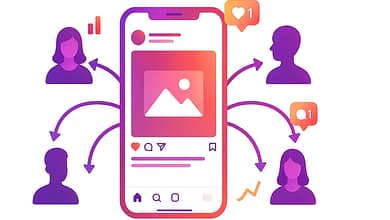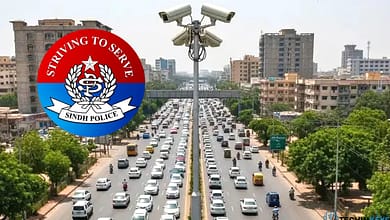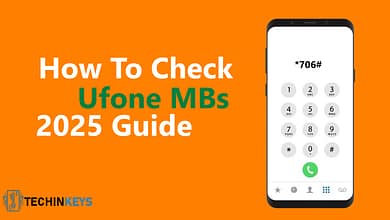
The Internet of Things (IoT) continues to revolutionise how we live, work, and interact with technology. As we move into 2025, IoT is entering a new era marked by smarter systems, faster connectivity, and deeper integration across industries. From smart cities to intelligent healthcare and automated factories, the possibilities are expanding rapidly.
This article breaks down the top 10 IoT trends to watch in 2025 that are set to define the next wave of innovation and reshape how businesses and consumers engage with smart technology.
Table of Contents
1. Edge Computing Becomes a Core IoT Strategy
In 2025, edge computing will no longer be optional—it will be essential. By processing data at the source (closer to devices), edge computing reduces latency, boosts performance, and alleviates network congestion.
This is especially critical for real-time applications such as autonomous vehicles, smart manufacturing, and remote healthcare monitoring, where milliseconds matter. Edge solutions also improve data privacy, as sensitive information doesn’t need to travel to centralised cloud servers.
Key takeaway: Expect edge computing to become the default for time-sensitive and bandwidth-intensive IoT applications.
2. AI-Powered IoT (AIoT) Transforms Real-Time Decision Making
The integration of artificial intelligence (AI) with IoT—commonly known as AIoT—is set to reach new heights in 2025. These AI-enhanced IoT systems will not just gather data but will also interpret, predict, and act on it autonomously.
From predictive maintenance in manufacturing to adaptive smart home systems, AIoT will redefine automation by enabling devices to learn from patterns and optimize performance over time.
Why it matters: The combination of AI and IoT drives hyper-personalization, operational efficiency, and intelligent automation across sectors.
3. IoT Security Takes Center Stage Amid Rising Threats
As the number of connected devices grows, so does the potential for cyberattacks. In 2025, IoT security will be a top priority for both enterprises and consumers. Without robust safeguards, vulnerabilities in IoT systems can lead to data breaches, service interruptions, and even physical harm.
Emerging solutions include:
-
Hardware-based security modules
-
Blockchain-enabled data validation
-
Zero-trust network architectures
Government regulations, such as the EU Cyber Resilience Act and U.S. federal security guidelines, are pushing for stricter standards. Companies that fail to comply may face legal and reputational consequences.
4. The Rise of Massive IoT and LPWAN Networks
Massive IoT refers to the deployment of vast numbers of low-power, low-cost devices across large geographic areas. This trend is fueled by low-power wide area networks (LPWANs) such as NB-IoT and LoRaWAN.
These networks enable efficient communication between sensors and systems in:
-
Smart agriculture (e.g., soil and crop sensors)
-
Utility metering
-
Wildlife and environmental tracking
-
Remote infrastructure monitoring
As coverage expands and battery life improves, expect LPWANs to power the next generation of scalable, sustainable IoT deployments.
5. 5G Accelerates Smart City Innovation
5G technology will be the foundation of truly connected smart cities in 2025. With its high speed, low latency, and ability to support massive device densities, 5G enables real-time data sharing and instant communication between IoT devices.
Use cases include:
-
Traffic flow optimization
-
Smart public lighting
-
Emergency response coordination
-
Air quality monitoring
As governments partner with telecom providers, expect a sharp increase in 5G-enabled urban infrastructure, resulting in safer, more efficient, and responsive cities.
6. Industrial IoT (IIoT) Powers the Smart Factory Revolution
The Industrial Internet of Things (IIoT) is transforming manufacturing into a data-driven, automated industry. In 2025, factories will leverage IIoT for:
-
Predictive maintenance
-
Digital twins for simulation and testing
-
Real-time inventory tracking
-
Energy efficiency optimization
This shift will align with Industry 5.0, which emphasizes collaboration between humans and machines, blending robotic precision with human creativity. Companies that embrace IIoT will enjoy increased uptime, better quality control, and improved safety.
7. Healthcare Evolves Through the Internet of Medical Things (IoMT)
The Internet of Medical Things (IoMT) is reshaping patient care by connecting medical devices, wearables, and diagnostic tools to provide real-time health insights.
Key 2025 trends include:
-
Remote patient monitoring via smart wearables
-
Smart hospital beds with biometric sensors
-
AI-driven diagnostics for faster treatment decisions
-
Connected insulin pumps and inhalers
This technology will be instrumental in reducing hospital readmissions, managing chronic conditions, and improving patient outcomes—especially in remote or underserved areas.
8. Green IoT Emerges as a Sustainability Driver
Sustainability is at the forefront of global priorities, and IoT is proving essential for building a greener future. In 2025, Green IoT technologies will be adopted to reduce emissions, cut energy consumption, and monitor environmental impact.
Examples of green IoT applications:
-
Smart grids for efficient electricity distribution
-
Precision irrigation in agriculture
-
Air and water quality sensors
-
Sustainable supply chain tracking
As companies pursue ESG (Environmental, Social, Governance) goals, IoT will serve as a powerful tool for measuring and managing environmental performance.
9. Interoperability and Open Standards Fuel Ecosystem Growth
One of the biggest challenges for IoT adoption has been the lack of interoperability between devices and platforms. In 2025, we’ll see greater emphasis on open standards to ensure seamless communication across diverse systems.
Notable frameworks gaining traction:
-
Matter (unifying smart home protocols)
-
OPC UA (for industrial automation)
-
MQTT (lightweight messaging protocol)
Improved interoperability will reduce complexity, enable vendor-neutral ecosystems, and accelerate innovation across smart homes, factories, and cities.
10. Human-Centered IoT Enhances Everyday Life
As IoT becomes more embedded in daily life, the focus is shifting from functionality to human experience. In 2025, user-centric design will drive the development of IoT devices that are intuitive, adaptive, and inclusive.
Examples of this trend include:
-
Voice-controlled home assistants
-
Gesture-based smart wearables
-
AR/VR interfaces for immersive interaction
-
Accessibility features for aging populations
These advancements will not only improve convenience but also promote well-being, independence, and digital inclusivity.
Final Thoughts: Preparing for the IoT Future
The IoT trends in 2025 signal a future where devices are smarter, systems are more secure, and technology is seamlessly integrated into every aspect of life. Whether you’re a business leader, developer, or tech enthusiast, staying ahead of these trends is key to leveraging the full potential of IoT.
By focusing on edge computing, AI integration, 5G connectivity, and sustainable innovation, organizations can create value while improving operational efficiency and environmental impact.



